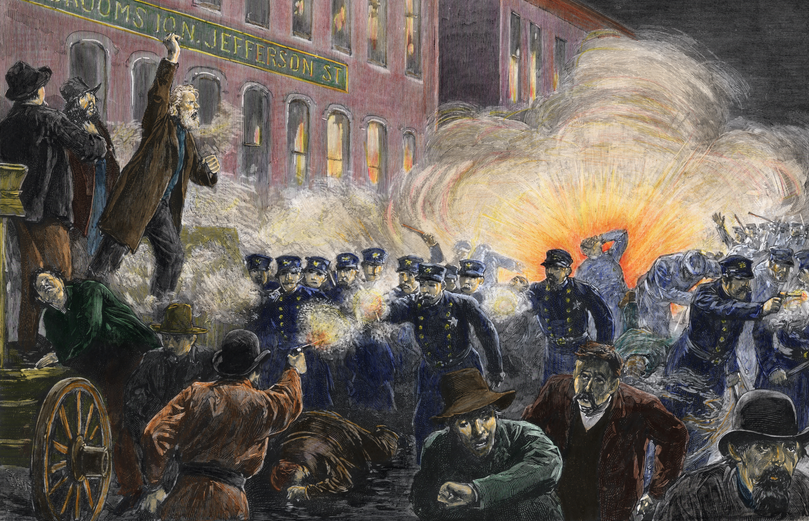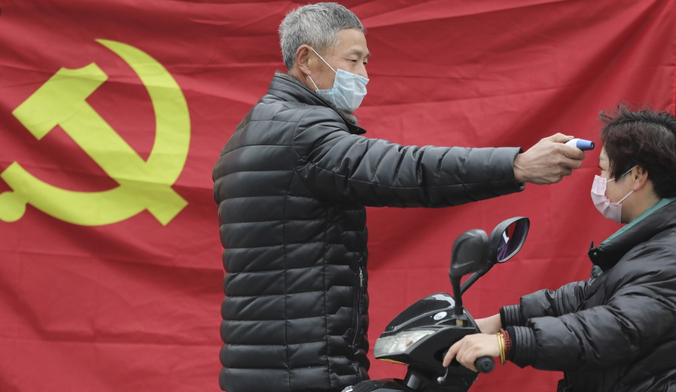JR, Baile Átha Cliath.
On May 1st, 1886, a mass labour movement originating in the industrial hub of Chicago culminated in a nationwide general strike of hundreds of thousands of workers. They stood in solidarity against intolerable working conditions. What were these intolerable working conditions? The length of the working day. Average working days were 10 to 12 hours, often 6 days a week. People were physically exhausted, unhealthy, it was impossible to have a personal life, to connect to your families and loved ones. Their demand? To shorten the working day to 8 hours. Something that is taken for granted nowadays was fought for by hundreds of thousands of workers standing in solidarity. They were ultimately successful, but not without struggle. The employer class, the capitalists, cried out in horror at their demands, ‘it can’t be, it shouldn’t be, it’ll drive us out of business, you won’t have any job at all, it’ll all be your fault, stop doing it!’ Sound familiar?
The working class of Chicago didn’t listen, though. Instead, they organised. They said “we won’t work unless conditions improve”. And despite police brutality, despite propaganda by the newspaper companies and the best attempts of the capitalists, they won. 134 years later, we remember, not only the struggle of the strikers, but the historic struggle of the working class. We learn from it. We take inspiration from it.

The global working class are faced with a similar struggle today. Throughout the world, working people are being forced back into work prematurely, before it is safe to do so, before the COVID-19 pandemic has been overcome. Workers of the world now are faced with the same choice that spurred the working class of 1886 to organise and take industrial action: return to an unsafe working environment, or face unemployment, and all that goes with it. Although the triggers for these events are different, the underlying structures are unchanged, that of class contradictions: the capitalist fears for their profits without the worker, the worker fears for their life without employment, even though the conditions of that employment will almost certainly result in risks to the life of the worker.
Throughout the United States, currently attempting to re-open the economy well before it will be safe to do so, we see scattered instances of working class organisation. We see Amazon workers attempting strikes, we see mutual aid organisations here and there, we hear murmurs of rent strikes. What we don’t see is large-scale, unified organisation of the American working class. With previous generations so heavily propagandized during the Cold War into distrust of worker solidarity, of unions, and of tackling the capitalist system for fear of being red-baited or being labelled unpatriotic, it’s not difficult to see why the labour movement of the United States is so disjointed, disorganised. In truth, much of the labour movement throughout the world has been similarly set back by old Cold War hysteria. But, in 2020, we have now two generations, roughly speaking, joining the workforce that never lived under the oppressive boot of Cold War propaganda. A big indication of this is the outpouring of support among the American working class for a candidate for president who is a self-identified democratic socialist, Bernie Sanders. Whether you agree with Sanders or not, the fact that millions in the imperial core have voted for a “socialist” can’t be underestimated.
In light of such, it is as disheartening as it is interesting to see the attempts by the capitalist class, the media empires, et al to whip up a new kind of Cold War hysteria, this time against China. It is interesting that, as China’s growing economy, as pictured below, is projected to overtake the US’ in the near future, how much of social media and traditional media discourse, soft-left to hard-right, is dedicated to vilifying and condemning China. As the Soviet Union’s mere existence threatened the global domination of the American Empire in the Cold War, so too now does the growing strength of China.
The same kinds of manipulation of the working class that happened during the Cold War are rearing its head again now. We’ve seen it a thousand times before. This isn’t a principled debate about capitalism versus socialism. This is about the American ruling class fearing for their global hegemonic domination of capital and the threats posed to it by China.

Throughout the entirety of the Cold War, capitalist governments had to give small concessions to the working class as an attempt to dispel any possibility of the working class organising against them or demanding socialism. In the U.K, you see the establishment of the NHS. In the United States, you see the establishment of MediCare and MediCaid (with a significant delay). You had livable wages with good benefits due to hard-won union objectives; little crumbs here and there to keep the masses onside. All that ended when the Soviet Union fell. As Fukuyama declared, the end of the Cold War was the end of history and the “universalization of Western liberal democracy as the final form of human government”. Capitalists could breathe easy, they had won. American capitalism had won. The working class will forever be doomed to be their servants. That was until China began to threaten to overtake the US economy, and like night follows day, anti-communist rhetoric dug up from past decades reappeared. In the eyes of the world capitalist class, the red menace is back.

For decades, the capitalists were overjoyed with China being the factory of the world. Wages were low and profits were higher than ever. It is only in the last number of years in which the Chinese economy has grown to the point of threatening those who have profited so much from it that the “evil, communist China” narrative has gained mainstream traction. It is worth noting that, in the last few days, India has offered land and funding to firms to lure their factories out of China. It seems China has fulfilled its purpose to the capitalists and, like all corrupt enterprises, when something is no longer useful, and in China’s case, has grown to become a threat, it must be disposed of, destroyed. The ideological state apparatuses of capitalism have been deployed to provide the justification for the capitalists’ growing concern at the curtailment of the power of capital in China.
These attempts to manufacture a Second Cold War is as despicable as it is transparent. The younger generations who grew up without Cold War propaganda that are now embracing socialism and communism in numbers not seen in decades pose a great threat to the capitalist status quo. The capitalists’ answer to this is the same as it was in the 20th Century: “how can you want socialism? Just look at evil [insert socialist nation du jour]!” They need to manipulate new generations unaffected by Cold War propaganda into the belief that socialism and communism is evil, and that western liberal democracy is as good as it gets. And that is what we’re seeing with anti-China propaganda; that is its purpose. They are terrified of what will happen if these generations are not browbeaten into anti-communism. For many on almost every degree of the political spectrum, the propaganda is working.
Our job, like those workers in Chicago 134 years ago, is to see through and resist the propaganda, to organise and build solidarity among the working class. It’s clear the bourgeoisie are afraid. Let’s give them reason to be.

